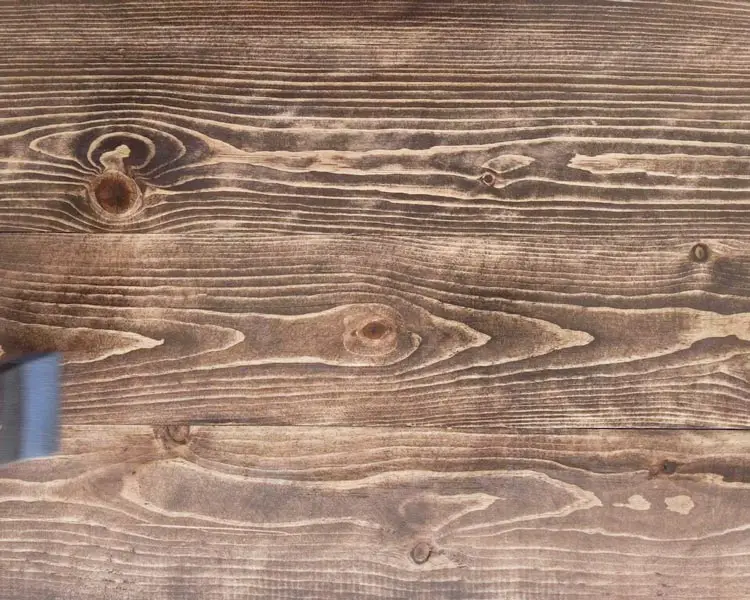Techniques for weathering wood include, how you apply your stain, how you physically distress the wood, and additional mixture you apply to the wood that speed up the process.
Examples of how apply your stain for a weathering effect may include using different tones of stains, watering down your stain, and the brush strokes you use.
Examples of how to physically distress your wood include sanding, scratching, and chiseling.
Mixtures that can weather wood (or create a weathered look) are vinegar, coffee, and watered down paint.
Example Of Weathering Wood
This is the process we used to create a lightly weathered backdrop that has a dynamic color and textured look.
- Base Stain (dark stain)
- Sand
- Second Stain (lighter stain)
- Vinegar
- Sand
- Coffee
- Seal
Step 1- Base Stain Layer
Apply a thin coat of a dark base stain, we used Kona.
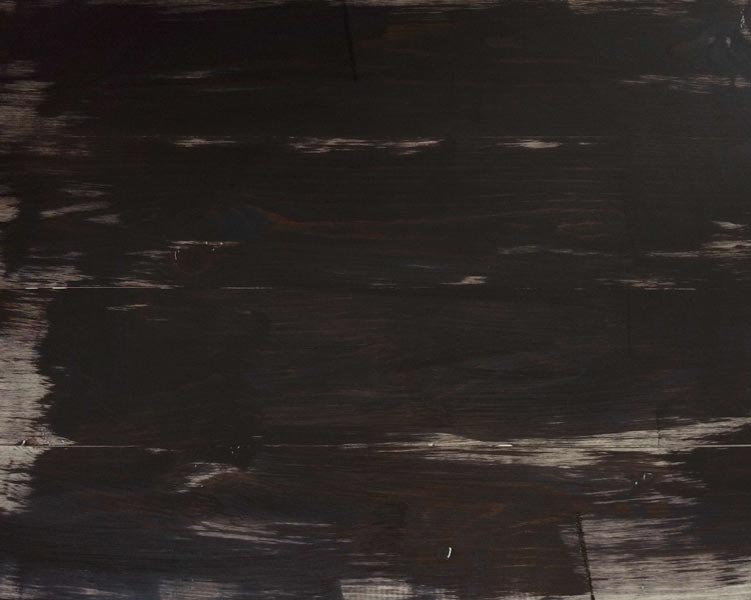
Step 2- Sand
Lightly sand with 120 grit or lower sand paper.
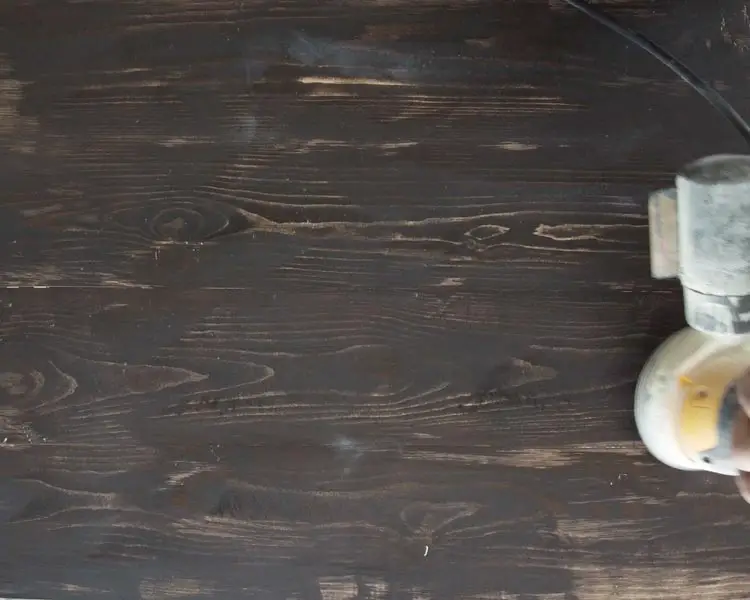
Step 3- Lighter Stain Layer
This layer will add a smoother transition between the lighter areas and darker areas. It will also add a more dynamic color range. This step is not necessary. We used Early American stain.
Apply the stain and immediately wipe it off.
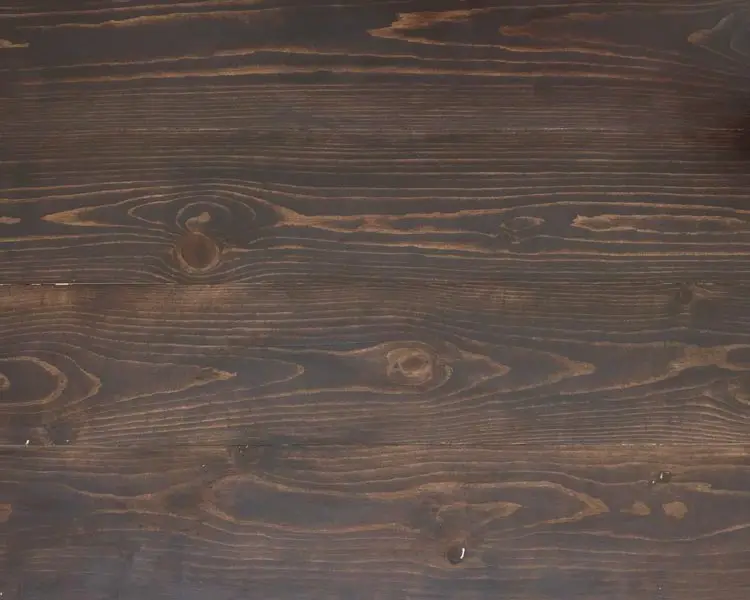
Step 4- Vinegar
Rub the wood with vinegar, it will react with the wood and the stain, creating some light weathering.
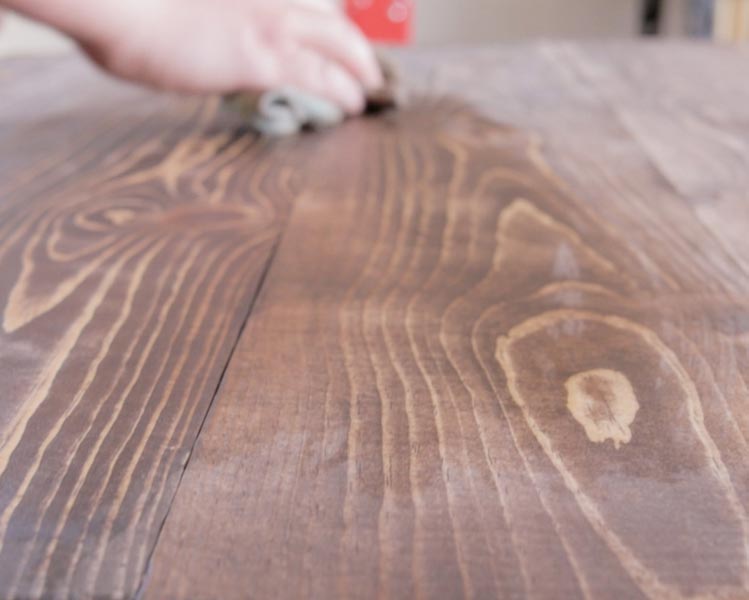
Step 5- Sand
Do another light sanding, you can also concentrate in certain areas to make it seem more worn.
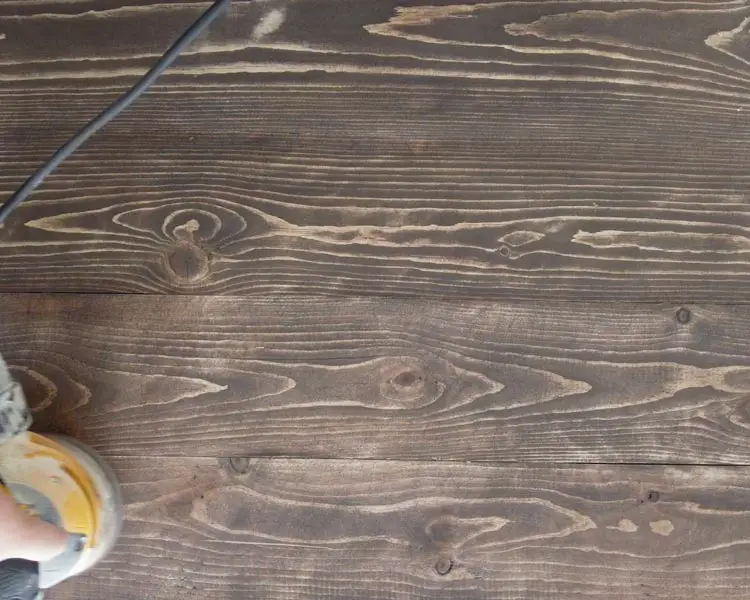
Step 6- Coffee
Rub the wood with coffee, it will further the weathering and add color.

Step 7- Seal
If you wood like to preserve the way the wood looks, you can seal it. We used polyacrylic. The the coffee and vinegar in the wood will continue to react and you may see a slight change.
